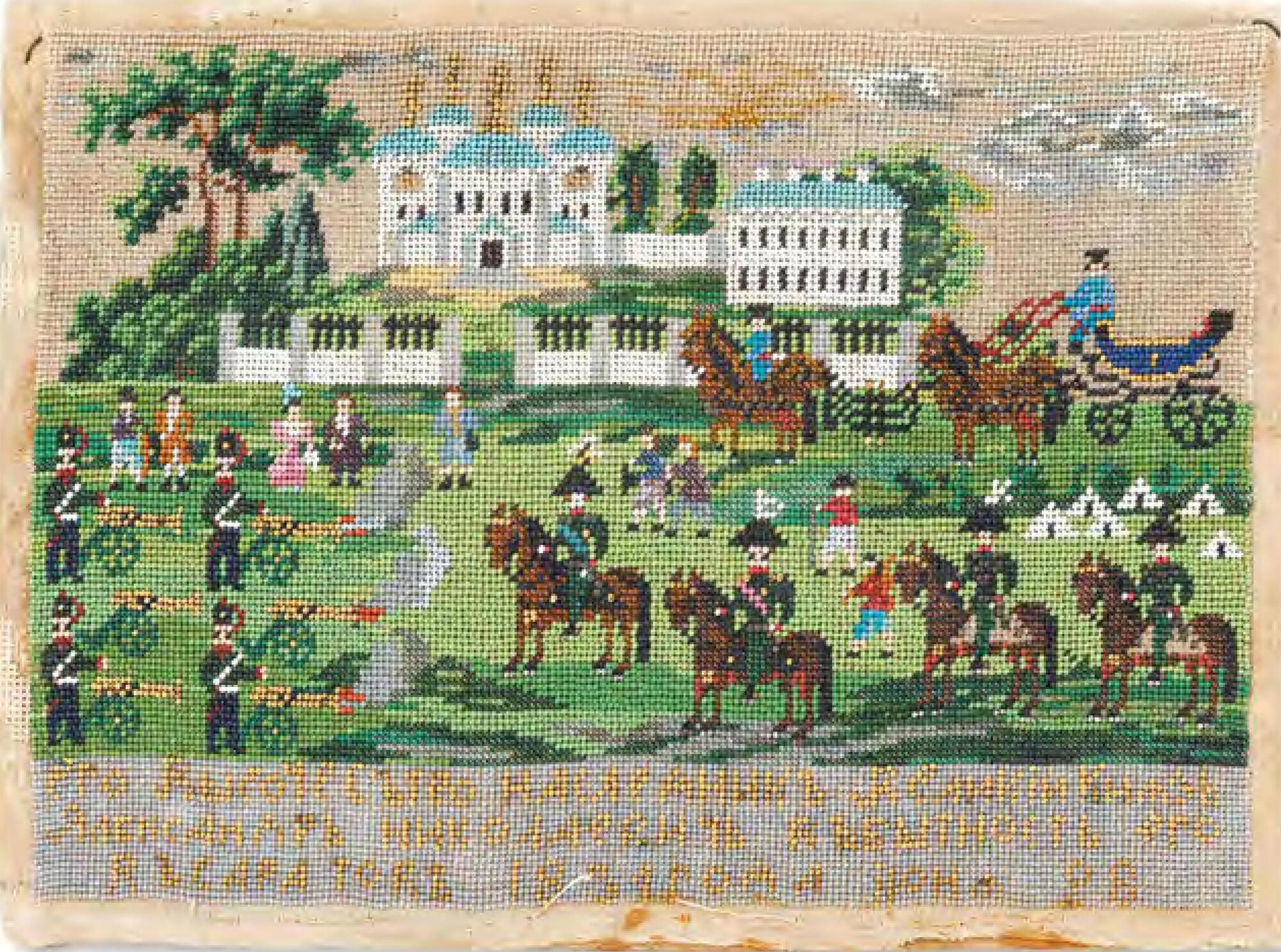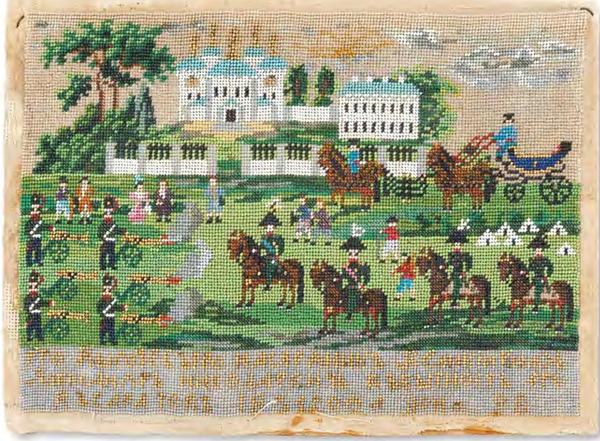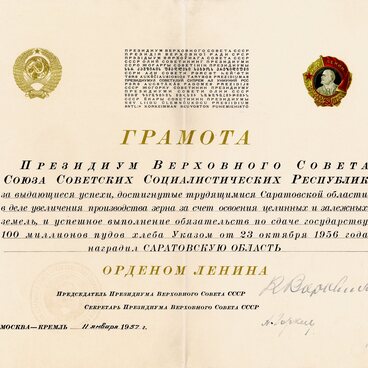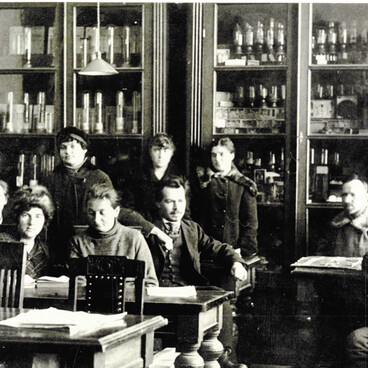This embroidery depicts the arrival of Tsesarevich Aleksander Nikolayevich to Saratov; he would later become Tsar Alexander II. The Tsesarevich is depicted in the center: dressed in a uniform, he is sitting on a horse. He is surrounded by horsemen, artillerymen shooting from cannons, and townspeople. Behind the figures of people, two carts are visible, drawn by pairs of horses. In the background behind the fence, you can see the temple of the Spaso-Preobrazhensky Monastery, with its five domes. In the memoirs written by the poet Vasily Zhukovsky, who from 1826 to 1841 was the Tsesarevich’s teacher, he notes that the heir and his retinue watched the artillery exercises not far from Spaso-Preobrazhensky Monastery the slope of the hill called Lysaya Gora. At the bottom of the composition, on a gray background, this inscription is embroidered with golden beads: “His Highness the heir to the Grand Prince Alexander Nikolayevich when he was in Saratov in 1831 on June 28th”.
The embroidery is made with small beads on a cotton canvas. The canvas is laid down on cardboard and secured on the reverse side with stitches of threads. The golden beads with which the domes and the inscription are embroidered convey the solemnity and significance of the event depicted by the Saratov craftswoman. For embroidery with small beads, thin, elastic needles that had a fairly wide eye were used. The thin walls of this eye allowed it to slightly compress when passing through a small bead.
The date “1831” indicated on the embroidery is wrong: the future emperor only arrived in Saratov in 1837. During his visit, the Tsesarevich visited a secondary school, hospital, an almshouse, and the Aleksander Nevskiy Cathedral. From certain sources, it has become known that by the time the Tsesarevich arrived the islands in the Volga River, and all the ships at the pier, were brightly illuminated. In honor of his visit, a ball was held, and an exhibition was opened. It featured salt from Lake Elton, different varieties of wheat, wool, yarn, candles, hemp products, soap, tobacco, shawls and scarves from the Kolokoltsev Manufactory, cloth, felt boots, and pillows. Archaeological finds from one capital of the Golden Horde - the ancient city of Saray (now the village of Selitrennoye in Astrakhan Province) - were exhibited in a specially dedicated “scientific department”.
The embroidery is made with small beads on a cotton canvas. The canvas is laid down on cardboard and secured on the reverse side with stitches of threads. The golden beads with which the domes and the inscription are embroidered convey the solemnity and significance of the event depicted by the Saratov craftswoman. For embroidery with small beads, thin, elastic needles that had a fairly wide eye were used. The thin walls of this eye allowed it to slightly compress when passing through a small bead.
The date “1831” indicated on the embroidery is wrong: the future emperor only arrived in Saratov in 1837. During his visit, the Tsesarevich visited a secondary school, hospital, an almshouse, and the Aleksander Nevskiy Cathedral. From certain sources, it has become known that by the time the Tsesarevich arrived the islands in the Volga River, and all the ships at the pier, were brightly illuminated. In honor of his visit, a ball was held, and an exhibition was opened. It featured salt from Lake Elton, different varieties of wheat, wool, yarn, candles, hemp products, soap, tobacco, shawls and scarves from the Kolokoltsev Manufactory, cloth, felt boots, and pillows. Archaeological finds from one capital of the Golden Horde - the ancient city of Saray (now the village of Selitrennoye in Astrakhan Province) - were exhibited in a specially dedicated “scientific department”.



